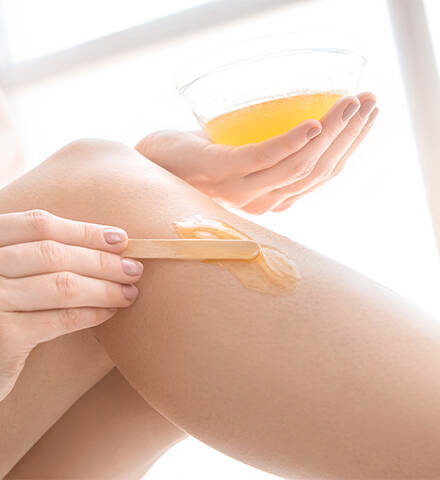Email format error
Email cannot be empty
Email already exists
6-20 characters(letters plus numbers only)
The password is inconsistent
Email format error
Email cannot be empty
Email does not exist
6-20 characters(letters plus numbers only)
The password is inconsistent

Sugaring and waxing are two of the most popular methods for achieving smooth, hair-free skin. Both techniques remove hair from the root, promising longer-lasting results than shaving or depilatory creams. But if you're wondering which one is better for your skin, pain tolerance, or lifestyle, you're not alone. In this blog post, we break down the pros and cons of sugaring vs waxing to help you decide which method is right for you.
Sugaring is a hair removal technique that dates back to ancient Egypt. It uses a paste made from all-natural ingredients: sugar, lemon juice, and water. The sugar paste is applied to the skin in the opposite direction of hair growth and then removed in the direction of hair growth.
Waxing, on the other hand, involves applying a sticky wax (either soft or hard) to the skin. The wax is spread in the same direction as hair growth and then pulled off in the opposite direction, either with a strip (soft wax) or by itself (hard wax).
| Feature | Sugaring | Waxing |
| Main ingredients | Sugar, lemon juice, water | Resin, oils, and additives |
| Application method | Opposite direction of hair growth | Same direction of hair growth |
| Removal method | Same direction of hair growth | Opposite direction of hair growth |
| Pain level | Generally less painful | Can be more painful |
| Skin irritation | Minimal – good for sensitive skin | May cause redness and bumps |
| Cleanup | Water-soluble and easy to remove | Requires oil-based remover |
| Best for | Sensitive skin, fine to medium hair | Coarse hair, large areas |
Because sugaring only adheres to dead skin cells and hair (not live skin), it's often less abrasive and irritating than waxing.
Sugaring paste is made with 100% natural, non-toxic ingredients, making it ideal for those with sensitive skin or allergies.
Since the hair is removed in the natural direction of growth, sugaring is less likely to cause breakage, which means fewer ingrown hairs.
The sugar paste is water-soluble, so any residue left behind washes off easily with warm water—no need for oils or special wipes.
Waxing covers larger areas quickly, making it ideal for legs, arms, and back treatments.
Waxing grips the hair more tightly, making it effective at removing thick or coarse hair.
Like sugaring, waxing removes hair from the root, offering results that last 3 to 4 weeks.
Waxing services are available at nearly every salon or spa, and there are also many at-home waxing kits on the market.
Pain tolerance varies from person to person, but many people find sugaring to be less painful. This is largely because sugaring doesn't stick to live skin cells and is removed in the direction of hair growth. Waxing, on the other hand, pulls against the grain, which can lead to more discomfort and skin trauma.
Sensitive Skin: Sugaring is typically more suitable for sensitive skin due to its natural ingredients and gentle method.
Oily or Acne-Prone Skin: Sugaring may also be better, as it doesn’t clog pores or leave residue.
Normal to Tough Skin: Waxing works well and is highly effective for thicker hair types and less sensitive areas like legs or back.
| Method | Salon Price (Average) | At-Home Option | Frequency Needed |
| Sugaring | $40–$80 per session | Less common | Every 3–5 weeks |
| Waxing | $30–$70 per session | Widely available kits | Every 3–4 weeks |
Sugaring tends to be slightly more expensive, especially since fewer salons offer it. However, its benefits for sensitive skin may justify the cost for many.
Sugaring is often considered the more eco-friendly and cruelty-free option. The paste is biodegradable, uses minimal packaging, and contains no animal products or synthetic additives. Waxing products may contain chemicals, preservatives, and are often not vegan (some contain beeswax or lanolin).
Here's a simple guide to help you decide:
Choose sugaring if you:
Have sensitive or allergy-prone skin
Prefer natural skincare
Struggle with ingrown hairs
Want a gentler alternative to waxing
Choose waxing if you:
Have coarse or thick hair
Need to treat large areas quickly
Are already used to waxing and tolerate it well
Want more accessible and budget-friendly services